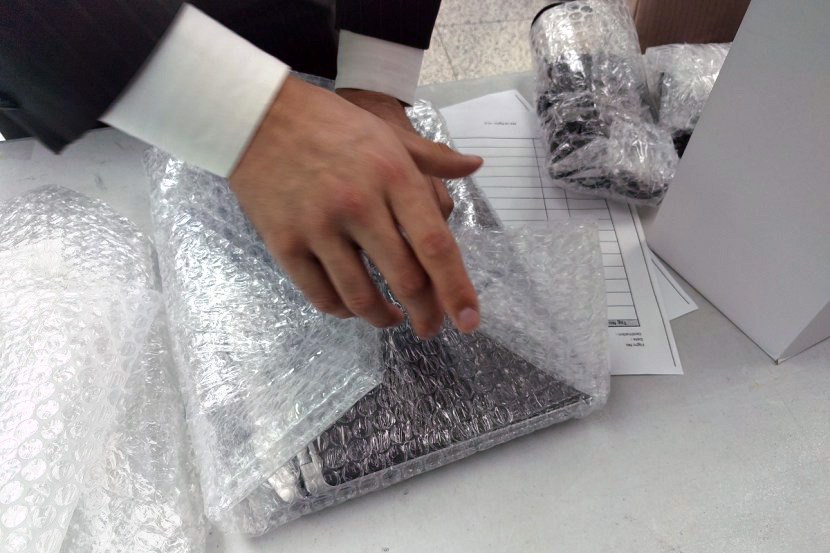
Relocation to a new home or working space is one of the most exciting and challenging times for any individual. Packaging electronics is the most challenging work people have to do when relocating. Laptops, TVs, home theatres, and even kitchen appliances need special care as they are delicate or enormous. Besides ensuring the gadgets safely reach your new location, the correct packing with Vancouver movers will save you money and hassle. Here are some best practices for packing electronics for the relocation to make it go smoothly:
1. Backup Your Data
Spend time backing up vital files and data before packing up any electronic devices, particularly laptops, phones, and tablets. Although you are simply relocating to a new city, something always has the potential to go wrong when moving data; thus, you risk losing some files. It would be appropriate for backing up documents and other essential images if you employed either a USB flash drive or an external hard disk drive. Moreover, with this step, cloud storage would retrieve the file if something went amiss or damage was not forecasted.
2. Use Original Packaging Materials
If you still have your devices’ original boxes and packing materials, now is the time to use them. Manufacturers design packaging for a reason: to provide your stuff with the best protection possible. The strong boxes, foam inserts, and protective plastics keep your electronics cushioned and prevent them from shifting during transport. If you don’t have the original boxes, find a box that fits your belongings snuggly and provide the proper packing supplies like foam, peanuts, or bubble wrap.
3. Unplug and Label All Cables
Moving can cause the jumbled mess of wires from electronics to be misplaced or confused. Unplug all cords, cables, and accessories attached to each gadget. To keep cords tidy, use colour-coded zip ties or cable ties. Labelling each cable with a little sticker or masking tape will make it easier to identify which cable goes with which device. To make it easier to rejoin everything later, it’s also helpful to snap a picture of the connections before unplugging them.
4. Use Bubble Wrap and Packing Materials
Ensure all your electronics are safely wrapped in bubble wrap or other protective materials before packaging. Since corners and edges likely sustain damage, they cover every surface of fragile devices like printers, monitors, and flat-screen TVs. Devices like routers, game consoles, and miniature kitchen appliances must be placed in solid boxes and wrapped with crumpled paper or packing peanuts so they do not shift during the move. Hire 4 You Moving professionals to ensure a stress-free and reliable moving experience from start to finish.
5. Pack Your Electronics Upright
Televisions and large monitors always need to be packed upright in terms of packaging. This way, the risk of putting stress on the screen or inner components is avoided as these gadgets must be packed vertically, similar to a picture frame. Ensure that the box is tall enough to hold the device in this position and that the packaging materials provide sufficient cushioning. An additional layer of protection against impact may be provided with a moving blanket or a thick layer of bubble wrap.
6. Use Furniture Pads and Blankets for Larger Electronics
More significant stuff, such as home theatre systems, washing machines, and refrigerators, require more than a few layers of bubble wrap. It should be covered with moving blankets or furniture pads with great care so it doesn’t scuff, bump, or even the elements, in case you need to drag it through outdoor areas. Securing them inside the moving truck is also very important to avoid their falling or movement. Choose 4 You Moving for a reliable moving experience from start to finish.
7. Lock Little Things in a Safe Box
Use smaller, easier-to-handle boxes for smaller electronics like phones, tablets, and cameras. Make sure these products are cushioned within the box using bubble wrap or foam to avoid any damage during transit. Pack these items in a zippered bag or separate pouch with charging cables, batteries, and accessories. This way, everything will stay in one location and not be lost.
8. Protect Batteries and Charging Devices
Batteries found in some devices should be cautious as they might shift with changes in pressure and temperatures during movement. Device batteries, especially game controllers, laptops, or phones, should permanently be removed before carrying such equipment and put individually in small packing bags. Chargers for rechargeable equipment should be removed and charged, but not until full, so their high voltage can trigger problems when moving the equipment. Cord chargers from rechargeable equipment should always be kept by rolling and tucked in smaller, safer bags.
9. Label Boxes Clearly
Once you have packed your electronics safely, label each box clearly with what is inside. Use a large marker to write the device’s name, being specific. To ensure that movers take extra care when handling fragile objects, mark boxes containing them with a “Fragile” label or symbol. For even more organization, you can create an exhaustive list of all electrical devices you are moving, including serial numbers and any extras in the boxes.
10. Use Professional Packing Services
If you are overwhelmed and unsure what to do with all your gadgets, consider hiring professionals or storage movers Vancouver to pack your electronics. Experts handling electronics know how to pack electronics to ensure nothing breaks during transport.
Conclusion
Count on 4 You Moving for reliable, professional service to make your relocation smooth and hassle-free. Preparation time and using the right packing materials can ensure that electronics for moving are not as hard to pack. Here are some suggestions for ensuring that electronics are well prepared and organized so they are transported securely without a problem, especially when you have a move around town or all over the nation.